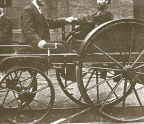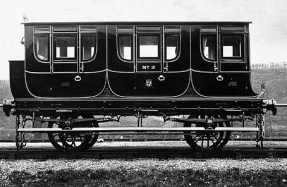FAMOUS SCOTTISH LOCOMOTIVE ENGINEERS J. F. McINTOSH OF THE CALEDONIAN RAILWAY

John Farquharson McIntosh began his illustrious railway career when he joined the Scottish North Eastern Railway in 1860 at the age of fourteen years. In 1865, he passed out as a locomotive fireman and qaulified as a driver two years later when he moved to Montrose. In 1866, when the Scottish North Eastern Railway became part of the Caledonian Railway, McIntosh was promoted to Locomotive Inspector for the Northern District of the company. In an accident he was handicapped by the loss of his right arm, but this setback did not deter him from his engineering work.
In 1883 he took charge of locomotive matters at Carstairs Junction and by 1886 he had been promoted to District Superintendent at Glasgow Polmadie depot, the company’s most important running shed. He continued his railway career in this capacity in association with the Caledonian Railway’s engineers Hugh Smellie and Ayr-born John Lambie.
In February 1895 McIntosh became Chief Locomotive, Carriage and Wagon Superintendent of the Caledonian Railway, a department of the company which was then under the control of Dugald Drummond. On his appointment he chose Thomas McDonald, the former Locomotive Foreman at Glasgow Polmadie shed, as his personal assistant who travelled throughout the system as a ‘talent scout’ to select the best locomotive drivers for future express engine passenger work.
After a period of nineteen years in charge at St. Rollox Works, Glasgow, McIntosh was elected as President of the Association of Locomotive Engineers. In the autumn of 1913 His Majesty King George V created him a Member of the Royal Victorian Order and personally wished him farewell on the Royal Train at Perth. McIntosh retired in 1914 in his 69th year and he died four years later on 6th February 1918.
Throughout the years, his locomotives designed for the Caledonian Railway were held in high esteem for their efficiency, robust construction and low maintenance costs, many of his main line, suburban passenger and freight types giving useful service in regular traffic well into the final days of steam engine working in Scotland. A ‘running man’ with a strong personality, McIntosh knew precisely what his footplatemen wanted from their engines in order to cope with the evergrowing and heavier passenger traffic on the Caledonian Railway.
He was an advocate of standardisation of locomotive parts in his designs wherever possible and was responsible for fitting his engines with
You’re reading a preview, subscribe to read more.
Start your free 30 days



